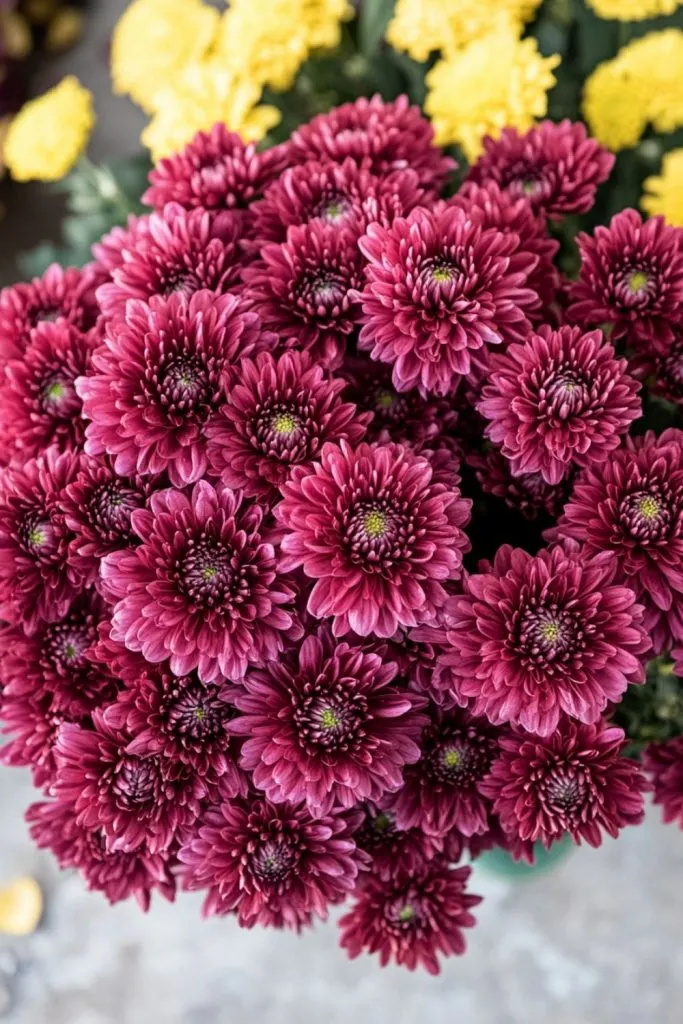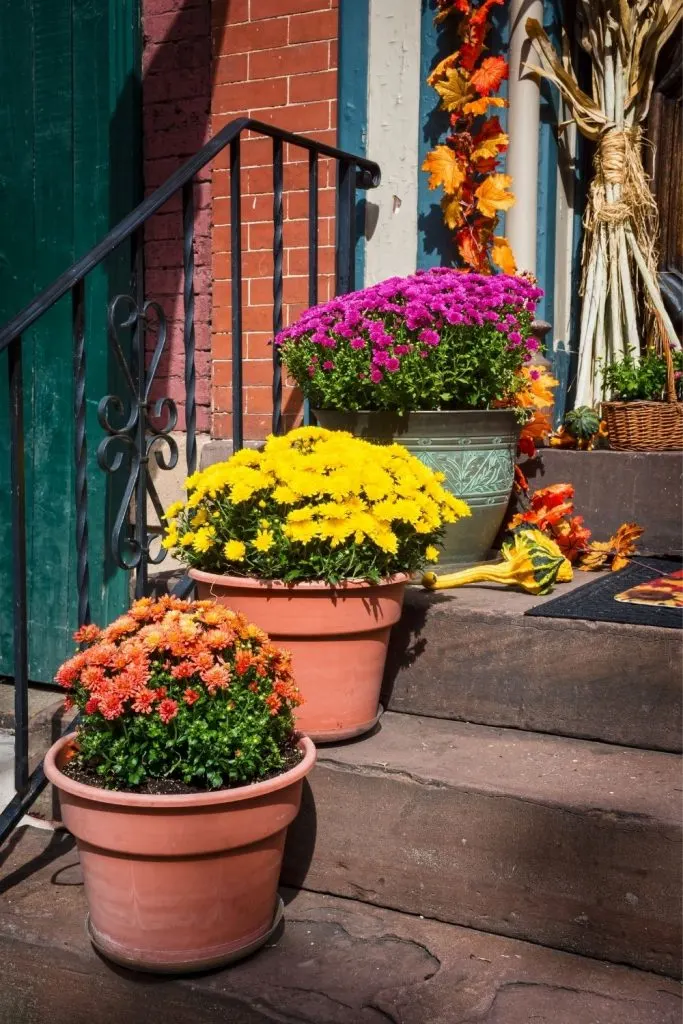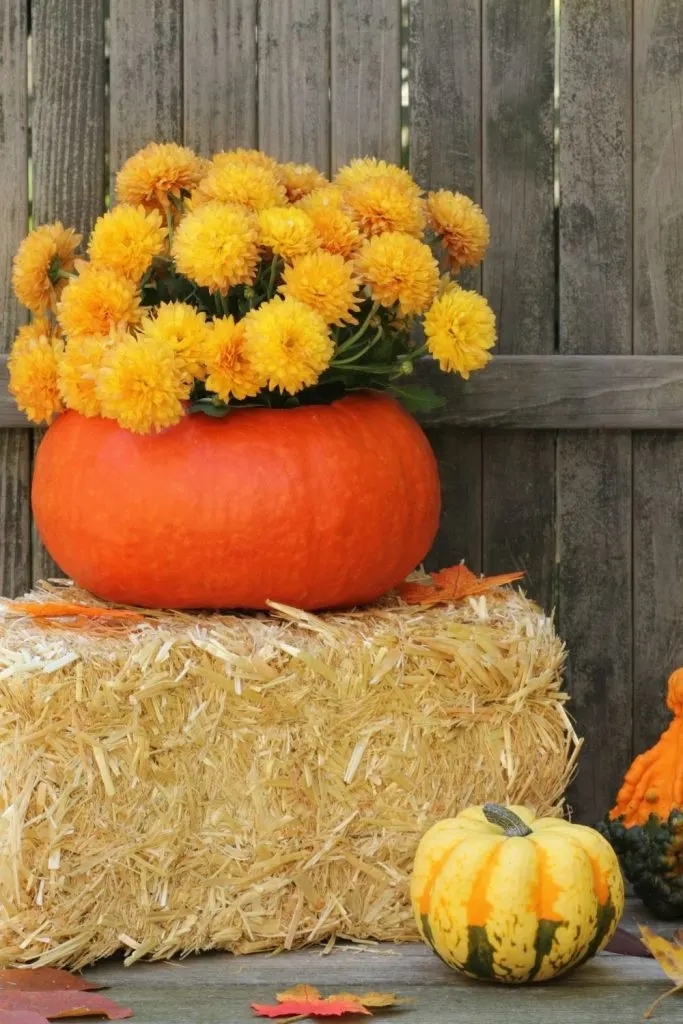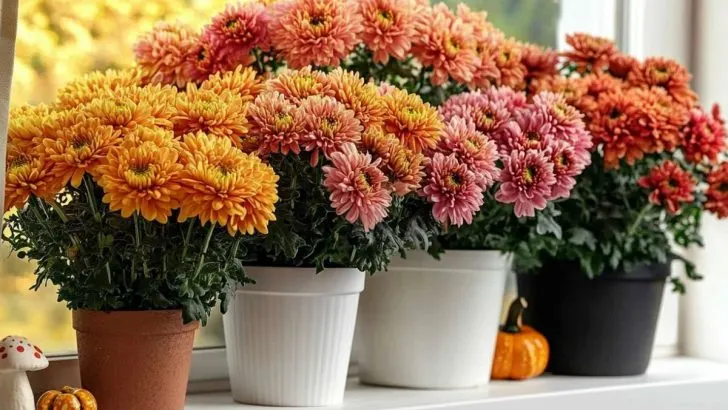Mums, or chrysanthemums, are a favorite in fall gardens, known for their bright, bold colors and lush, bountiful blooms.
These flowers can instantly elevate your garden, adding a rich palette of hues to your outdoor space. However, to keep them flourishing, there’s a simple but essential task you need to master: deadheading.
Deadheading, or removing spent flowers, isn’t just about keeping your garden neat – it’s a vital technique for encouraging continuous blooming and keeping your mums healthy.
By eliminating the faded blooms, you help the plant redirect its energy into producing new flowers rather than developing seeds.
The result? Fuller, healthier mums that offer a breathtaking display well into the cooler months.
Let’s dive deeper into why deadheading is crucial and how you can effortlessly incorporate it into your gardening routine for spectacular results.
Why Deadheading Mums is So Important
Deadheading mums goes beyond aesthetic appeal; it plays a significant role in promoting plant health and encouraging more blooms. Here’s why it’s such an effective practice:

1. Encourages More Blooms: By removing the spent flowers, you shift the plant’s focus from seed production to new bud development. This leads to more blossoms and a longer flowering season.
2. Improves Plant Shape and Structure: Regular deadheading prevents mums from becoming leggy and unkempt. It helps maintain a compact, bushy shape, which is not only visually pleasing but also healthier for the plant.
3. Extends Blooming Season: When you consistently deadhead, your mums will reward you with vibrant flowers for several additional weeks, letting you enjoy their beauty deep into fall.
By keeping your mums well-groomed through deadheading, you’re not only enhancing their appearance but also improving their overall health.
When and How to Start Deadheading Mums
Deadheading isn’t a one-time task – it’s something to be done regularly throughout the blooming season. Here’s when and how to get started:

• Timing: Begin deadheading as soon as the first flowers start to fade, typically a few weeks after blooming starts. Continue checking for spent blooms every few days.
• Ongoing Care: During the late summer to mid-fall blooming period, keep a close watch on your plants. As the days get shorter and the weather cools, new bud formation will slow down, signaling that you can reduce the frequency of deadheading.
Step-by-Step Guide to Deadheading Mums
Now that you understand the importance, let’s break down the simple steps for effective deadheading:

1. Spotting Spent Blooms: Look for flowers that have lost their color, are turning brown, or are beginning to wilt. These are the blooms to target. If the petals have fallen off and a small seed head is starting to form in the flower’s center, it’s definitely time to snip it off.
2. Use Proper Tools: Always use clean, sharp pruning shears or scissors. This ensures a clean cut, reducing the risk of disease or damage to the plant.
3. Where to Cut: Follow the stem of the spent bloom down to the first set of healthy leaves or branching point. Cut the stem at a 45-degree angle just above these leaves.
4. Avoid Unopened Buds: While deadheading, be cautious not to remove any unopened buds. These will be the next wave of blossoms.
Aftercare for Healthier, Happier Mums
Deadheading is only part of the equation. Here are a few more tips to keep your mums thriving:

• Watering: After deadheading, give your mums a thorough watering. This helps them recover from pruning and encourages new growth.
• Fertilizing: Every 2-3 weeks during the blooming season, feed your mums with a balanced, water-soluble fertilizer. This replenishes nutrients and further supports continuous flowering.
• Mulching: Apply a 2-inch layer of organic mulch around the base of your mums. This helps retain moisture, regulate soil temperature, and keeps the roots healthy.
• Disease Prevention: While deadheading, remove any yellow or diseased leaves to improve air circulation and reduce the risk of fungal infections.
Keep Your Mums Blooming Beautifully with Consistent Care
By following these deadheading practices, you’ll keep your mums in tip-top shape, ensuring a spectacular floral display that lasts well into the autumn months.
With minimal effort, your garden will stay vibrant, healthy, and bursting with color – just the way you envisioned it.


